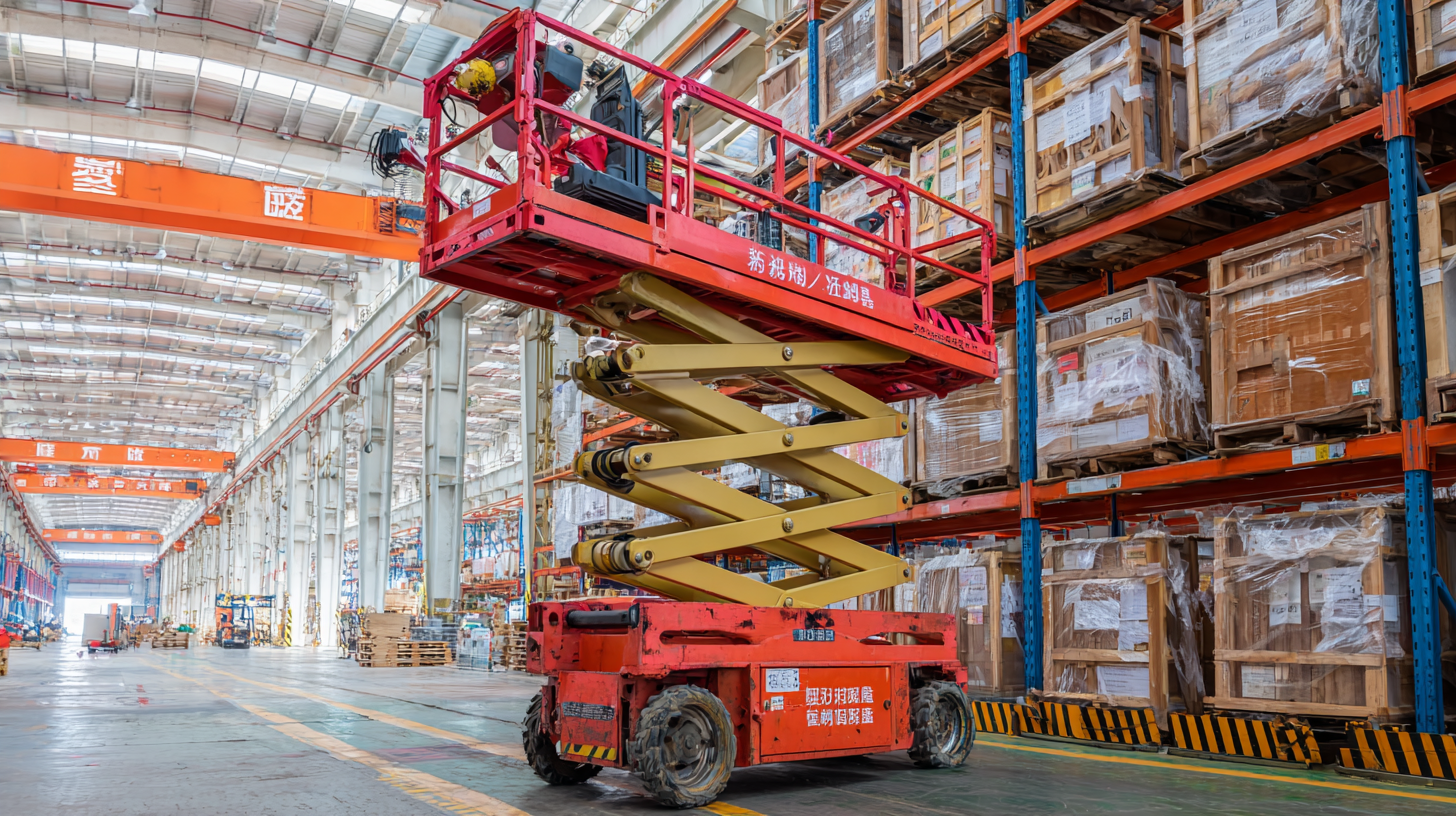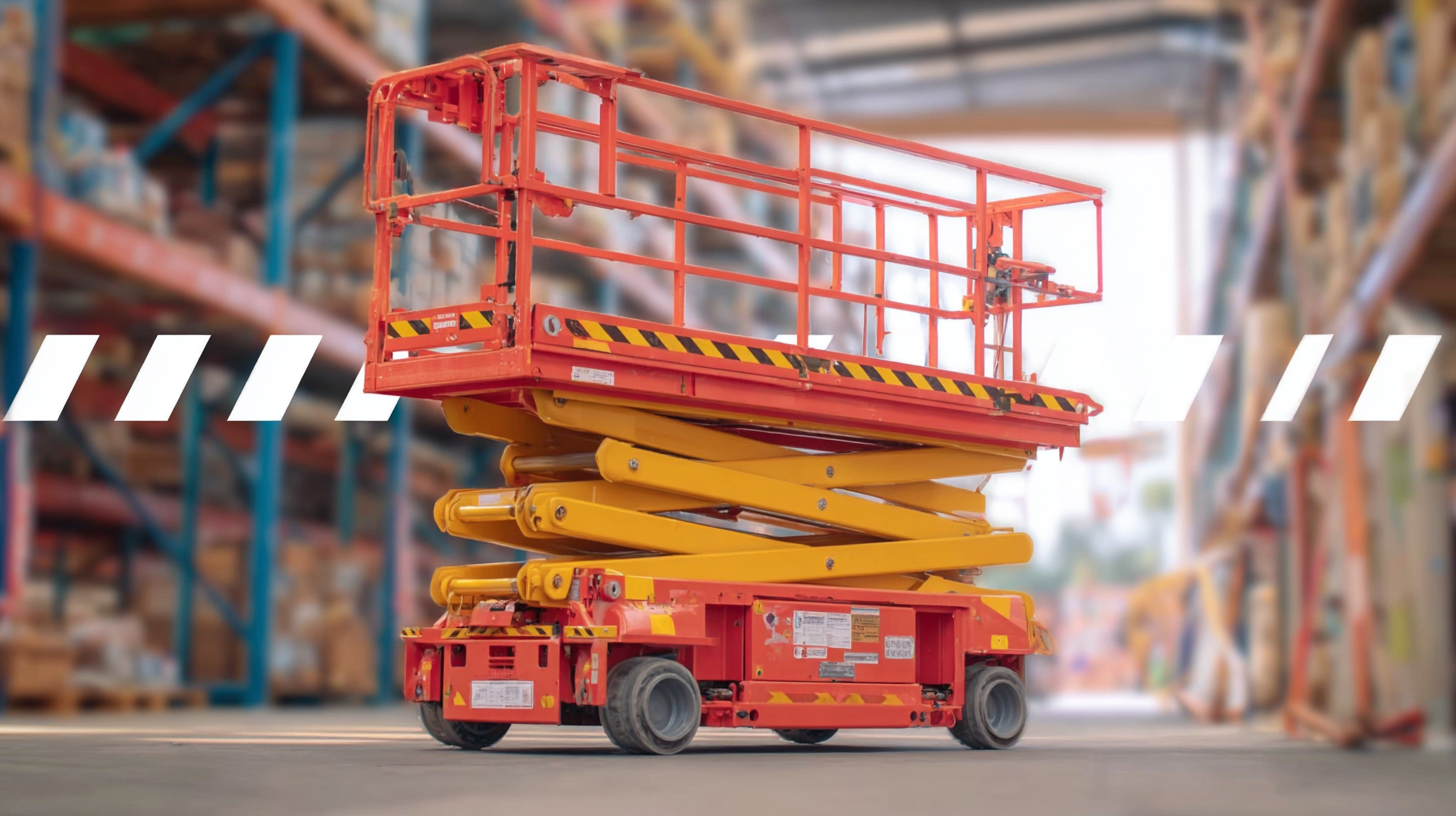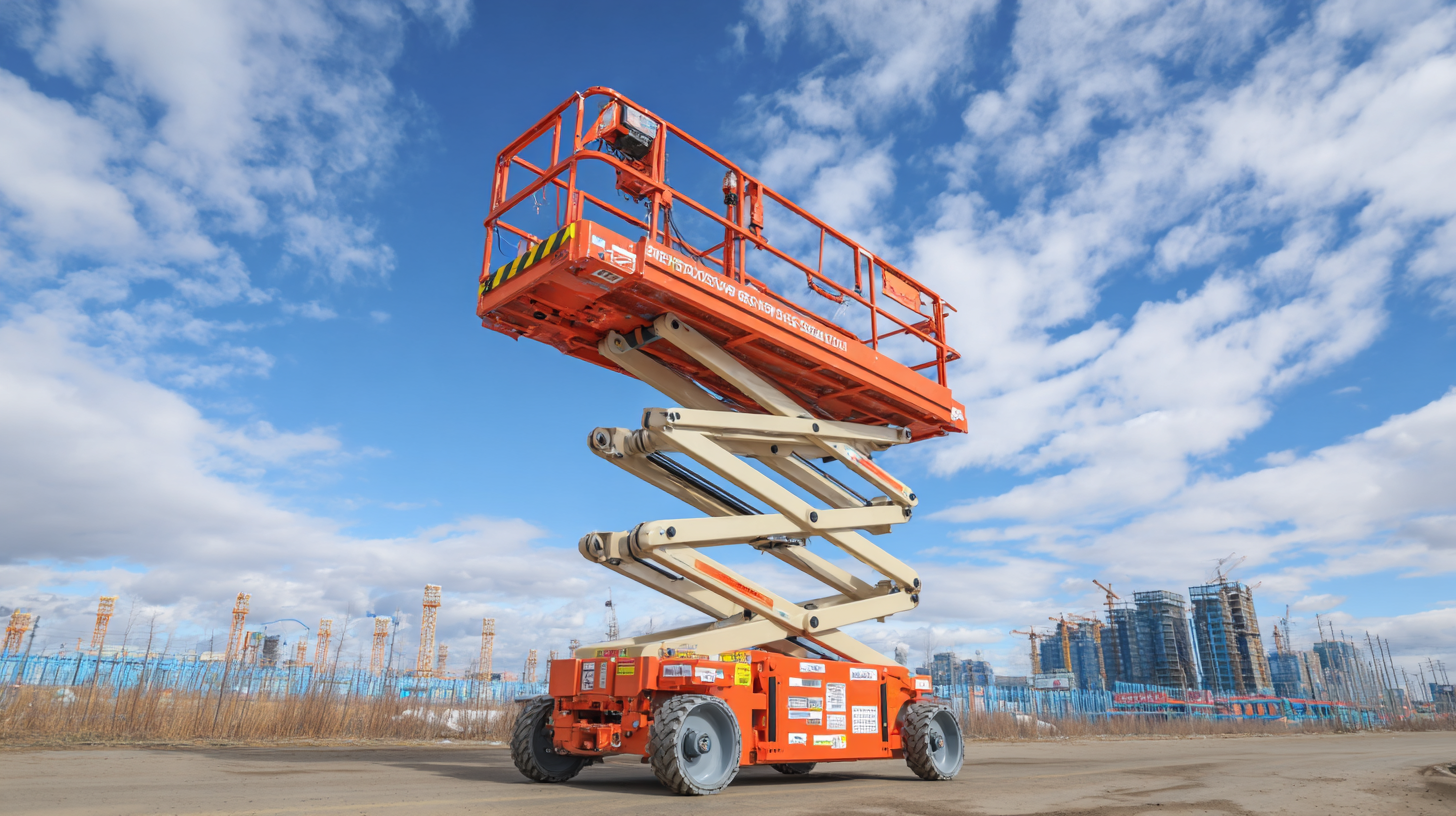Mastering the Use of Best Scissor Lifts Top Tips and Industry Insights for Global Buyers
In the ever-evolving landscape of construction and maintenance, Scissor Lifts have emerged as essential equipment for safely elevating personnel and materials to significant heights. As global buyers seek to optimize their operations and ensure workplace safety, understanding the intricacies of selecting the right Scissor Lifts becomes paramount. This guide aims to equip industry professionals with top tips and insights to master the use of Scissor Lifts, covering crucial aspects such as functionality, safety features, maintenance practices, and market trends. Whether you are a seasoned buyer or new to the world of aerial work platforms, this comprehensive approach will help you navigate the complexities of the market, ensuring that your investment in Scissor Lifts enhances productivity while adhering to best safety standards. Join us as we delve into the essential knowledge required to make informed purchasing decisions and maximize the effectiveness of your Scissor Lift operations.

Understanding Scissor Lifts: Types, Features, and Applications in Various Industries
Scissor lifts are essential equipment in various industries, providing vertical mobility for tasks that require extended reach. With a compact design and the ability to elevate heavy loads, these lifts are classified into several types, each tailored to specific applications. Electric scissor lifts are ideal for indoor use, offering low noise and zero emissions, making them perfect for warehouses and manufacturing facilities. In contrast, rough terrain scissor lifts are designed for outdoor applications, equipped with larger wheels and robust structures to navigate uneven surfaces.
Understanding the features of scissor lifts is crucial for global buyers. Key aspects include the lift capacity, platform size, and the maximum working height, which vary across different models. Some lifts also come with advanced safety features such as guardrails, emergency stop buttons, and slope stability sensors, ensuring safe operation in demanding environments. Moreover, the versatility of scissor lifts allows them to be utilized in construction, maintenance, and even entertainment industries, showcasing their vital role in enhancing productivity and safety in the workplace.
Scissor Lifts Usage by Industry
Key Factors to Consider When Selecting the Right Scissor Lift for Your Projects
When selecting the right scissor lift for your projects, there are several key factors to consider to ensure you make an informed choice. First and foremost is the lift capacity. Before purchasing, assess the weight of the materials and the number of workers who will be utilizing the lift. Choosing a model with adequate capacity is crucial to avoid accidents and ensure efficiency on the job site.
Another important aspect is the lift's working height and platform size. Make sure to evaluate the height requirements for your specific projects and consider the size of the platform to accommodate the team and equipment. A wider platform can enhance safety and provide more space for tools and materials, boosting overall productivity.
Additionally, take note of the surface conditions where the scissor lift will be operated. Terrain can significantly influence the type of lift you need. For rough or uneven ground, opt for a rough terrain scissor lift equipped with features like all-terrain tires and four-wheel drive. This will enhance stability and performance on various job sites, ensuring a smoother operational experience.
Insights from Leading Chinese Manufacturers: Quality and Innovation in Scissor Lift Design
When purchasing scissor lifts, buyers should consider insights from leading Chinese manufacturers, who are at the forefront of quality and innovation in design. These manufacturers utilize advanced engineering techniques and materials to enhance safety and efficiency in their products. By focusing on durability and user-friendly features, they ensure that their scissor lifts can meet the rigorous demands of various industries.
One crucial tip for global buyers is to prioritize certifications and compliance with international safety standards. Look for models that have passed rigorous testing, as this guarantees not only performance but also employee safety. Additionally, consider the warranty and after-sales service offered by the manufacturer, which can greatly affect long-term satisfaction and reliability of the equipment.
Another vital aspect to evaluate is the lift's operational capabilities, including load capacity and platform height. Opting for models that offer versatility can significantly enhance productivity. Buyers should also inquire about innovation features, such as advanced control systems and autonomous functionality, which can streamline operations and reduce downtime in busy work environments.
Mastering the Use of Best Scissor Lifts: Top Tips and Industry Insights for Global Buyers
| Model | Max Height (ft) | Lift Capacity (lbs) | Weight (lbs) | Power Source | Key Features |
|---|---|---|---|---|---|
| SL-101 | 25 | 800 | 3200 | Electric | Compact Design, Easy Maneuverability |
| SL-202 | 30 | 1000 | 4000 | Diesel | Rough Terrain, High Performance |
| SL-303 | 35 | 1200 | 4500 | Hybrid | Eco-Friendly, Versatile |
| SL-404 | 40 | 1500 | 5000 | Electric | High Capacity, Advanced Safety Features |
| SL-505 | 45 | 2000 | 5500 | Battery | Fast Charging, User-Friendly Controls |
Best Practices for Maintaining and Operating Scissor Lifts Safely and Effectively
 When it comes to operating scissor lifts safely and effectively, adhering to best practices is essential. Data from the Occupational Safety and Health Administration (OSHA) indicates that improper usage of lifting equipment is a leading cause of workplace accidents. In fact, nearly 45% of accidents linked to scissor lifts involve falls from heights, highlighting the need for proper training and maintenance. Operators should undergo comprehensive training that includes both theoretical knowledge and hands-on practice, ensuring they are familiar with the specific model they will be using.
When it comes to operating scissor lifts safely and effectively, adhering to best practices is essential. Data from the Occupational Safety and Health Administration (OSHA) indicates that improper usage of lifting equipment is a leading cause of workplace accidents. In fact, nearly 45% of accidents linked to scissor lifts involve falls from heights, highlighting the need for proper training and maintenance. Operators should undergo comprehensive training that includes both theoretical knowledge and hands-on practice, ensuring they are familiar with the specific model they will be using.
Regular maintenance is another crucial aspect of ensuring operational safety. According to a report by the American National Standards Institute (ANSI), scissor lifts should be inspected before each use, and a more thorough examination should occur at least once a month. This routine helps in identifying potential issues such as hydraulic leaks or worn-out components, which could lead to critical failures. Furthermore, keeping scissor lifts clean and debris-free can enhance their longevity and reliability, contributing to a safer work environment. By prioritizing these best practices, operators can significantly reduce the risk of accidents while maximizing the equipment's efficiency.
Global Market Trends: The Future of Scissor Lifts and Challenges for Buyers
The scissor lift market is set to experience dynamic growth driven by advancements in construction and industrial applications. As global economies rebound post-pandemic, the demand for efficient vertical lifting solutions will likely increase. Buyers must navigate challenges such as fluctuating material costs and supply chain disruptions, a trend consistent across various industries, including real estate, where price volatility is evident due to inflationary pressures.

Tip 1: When purchasing a scissor lift, consider the total cost of ownership. This includes not just the initial investment but also maintenance, operating costs, and potential downtime. Having a clear understanding of these factors can lead to better budgeting and long-term savings.
Tip 2: Stay updated on technology trends within the industry. Features like electric power options and advanced control systems are increasingly popular, catering to the demand for more sustainable and user-friendly equipment. As the industry adapts to these innovations, being informed will empower buyers to make smarter decisions that align with future market trends.
As we look towards 2025, the integration of renewable energy solutions in construction practices is also expected to grow, aligning with the broader global push for sustainability. Understanding these industry shifts will be crucial for buyers to stay ahead in a competitive landscape.


